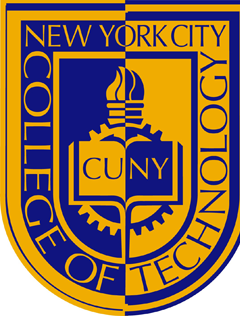SBS 2000 Research Methods for the Behavioral and Social Sciences Interdisciplinary
Course description:
An interdisciplinary introduction to the research methodologies utilized in the social and behavioral sciences, beginning with the fundamentals of research design, through data collection, analysis, interpretation, and the final reporting of results. Both quantitative and qualitative designs are examined using software to aid in inquiry and analysis.
Course pre-requisite (s):
Any Introductory ANTH, ECON, GEOG, GOV, HIS, PSY, SOC, or, any AFR or LTAM 1400 series course, or AFR 1501, 1502, 2402 or 3000, or COMM 2402, or 3401 and MAT 1180 or higher; ADGA students will also need the prerequisite of PSY 3407 Psychology of Perception.
Learning Outcomes:
Students will develop in the following areas the ability to:
- Knowledge: understand how to use scientific methodology and then generalize this knowledge across different social and behavioral disciplines to test hypotheses.
- Skills: create and evaluate research using various scientific methodologies across different disciplines.
- Integration: utilize the skills developed during this course to build upon material presented in other courses outside the boundaries of social and behavioral science.
- Values, Ethics, and Relationships: develop an understanding of the values, ethics and diverse perspectives that lead to an understanding of the conclusions that are based on scientific evidence through working with others in developing and testing hypotheses.
Student Assessments:
Each student will determine a research field based on their urban neighborhood in New York City. All work in the course will focus towards an integrated mixed-methods research project at the culmination of the course that will be presented as a poster and accompanying research paper.
MAJOR ASSIGNMENTS: 70 points
Research Question (10 points)
- Define your research question.
- Professional background, theoretical approach.
- Your research field (map and a small walk through the neighborhood)
- How to do quantitative with this question. (What will you count?)
- How to do qualitative with this question. (What will you observe?)
- Research schedule with proposed dates to complete the work. (use the syllabus for due dates to align your schedule)
Quantitative Assignment (10 points)
- Complete a scatterplot graph using the independent and dependent variable of a frequency data collection.
- Complete a bar graph and pie chart using a Likert Scale survey to at least 10 individuals
- Analyze the results and complete at least three results in paragraph narrative. 10
Qualitative Assignment (10 points)
Present a 700 word narrative that demonstrates the results of your observations, face-to-face interviews, photo montage, including at least three codes/themes/trends.
Attach your jot notes, home notes, field notes with coding, cinematic montage (if used). Make these digital images attached to your WORD document.
Final Presentation (10 points)
Core elements of the project:
- Research Field
- Research Question/Hypothesis
- Key points of Literature Review
- Quantitative Methodology and Results
- Qualitative Methodology and Results
- Implications and Recommendations.
You will have 7 minutes to present this on presentation day.
Students will divide between THEATER and POSTER presentations.
THEATER: Insert the power point you are using in your presentation here. The presentation must contain the core elements of your final project.
POSTER: You are to create a poster about 36 X 48 and prepared to mount it on the wall using masking tape or push pins on the evening of the presentation. It must contain the core elements of your project
Final Research Paper (30 points)
Each student will complete a Final Research Paper that includes all the elements of the research project including:
- Research Field
- Research Question/Hypothesis
- Key points of Literature Review
- Quantitative Methodology and Results
- Qualitative Methodology and Results
- Implications and Recommendations.
It will include an APA standard title page, abstract, key words, and bibliography.
It will include an Appendix that contains: Informed Consent, Quantitative Charts, Survey Questions, Map of Research Field, Cinematic Montage (if appropriate), Field Note, Chart of Ethnographic Episodes and timeline
MINOR ASSIGNMENTS 30 points (2 points each)
Annotated Bibliography: Include at least 5 open source journal based articles in your theoretical stream that you will use for your final paper that are related to your paper and professional field.
Research Field Mapping: Show your research field map in a graphic format (i.e. Google Map) Take a half hour walk around your neighborhood and note things that you see that strike you. Write a three-paragraph narrative about your neighborhood walk. Briefly describe a social issue that concerns you about your neighborhood that you are interested in writing about. Try to relate the social issue to your professional field you are looking towards or your college major.
Survey Questions: Create a quantitative survey of at least 5 questions to be given to at least 10 people. They should have open-ended Likert Scale responses, or x y response
VALS Survey: Complete VALS Survey and submit your results to Blackboard.
Informed Consent: Complete your own informed consent for your research based on the samples presented in class, the textbook, or other locations.
Cinematic Montage: Present a selection to 5 photographs based on a neighborhood theme.
Jot Notes: Upload onto Blackboard photos of your jot notes as written on pieces of paper, or photos of your mobile phone notes.
CITI Training: Complete the CITI Training in Human Subjects.
Complete a two-paragraph or point form description of the highlights of the guest lecturer (2 points each)
History and Archival Research; Methods in Open Source Research; Research in Consumerism and the Business of Fashion; Research Experiments and Ethics; Quantitative Research
Attendance and Class Participation and Interaction (4 points): Students are expected to respond to verbal questions in class and respond to inquiries made by the professor to OER readings and tutorials.
TOTAL 100
Grading Rubric
A = 93-100 A- = 90-92
(1) Superior understanding of course material and evidence of ability to analyze critically and synthesize creatively. (2) Sound techniques of scholarship in all projects. (3) Creativity, imagination, sound judgment, and intellectual curiosity in relating the course material to other areas of intellectual investigation.
B+ = 87-89 B = 83-86 B- = 80-82
(1) Understanding of course material; evidence of ability to produce viable generalizations and insightful implications. (2) Understanding of techniques of scholarship in all projects. (3) Sustained interest and the ability to communicate the ideas and concepts that are part of the subject matter of the course.
C+ = 77-79 C = 73-76 C- = 70-72
(1) Incomplete understanding of the course material demonstrated by errors in fact and judgment when discussing the materials. (2) Limited competence in the techniques of scholarship. (3) Less than satisfaction of the minimum stated requirements for the course in preparation, outside reading, and class preparation.
D+=67-69
D=63-66
D-=60-62 (1) Lack of understanding of the course material demonstrated by many errors in fact and judgment when discussing the material. (2) Inability to use sound techniques of scholarship. (3) Missing assignments or tests.
F: 0-62 Failure to meet the standard and fulfill the requirements of the course.
I: Incomplete. Awarded only under extreme circumstances and in accordance with the academic catalog
W – Withdrawn
Academic Integrity at City Tech:
Students and all others who work with information, ideas, texts, images, music, inventions, and other intellectual property owe their audience and sources accuracy and honesty in using, crediting, and citing sources. As a community of intellectual and professional workers, the College recognizes its responsibility for providing instruction in information literacy and academic integrity, offering models of good practice, and responding vigilantly and appropriately to infractions of academic integrity. Accordingly, academic dishonesty is prohibited in The City University of New York and at New York City College of Technology and is punishable by penalties, including failing grades, suspension, and expulsion. The complete text of the College policy on Academic integrity may be found in the catalog.
Attendance Policy:
You are required to fulfill the seat time requirement for this class which means being physically present in class. The seat-time requirement for this class is: Fifteen 2 hour 30 minute sessions
Prompt and consistent attendance is critical. Students are expected to attend all classes. Attendance will be taken at the beginning and/or the end of each class. The attendance policy allows two absences without penalty. Additional absences will be deducted at 2% penalty of the overall grade per day missed (A = A-, B+ = B etc.). For excused absences, they must be accompanied by documentation (doctor’s note, coach’s note, teacher’s note). Attendance accommodations cannot be made for work schedules except in extraneous cases. 3 lates or early equal one absence. Weather related class cancellations will not affect grades if students attend scheduled makeup sessions as per college emergency weather policy.
Academic Integrity at City Tech:
Students and all others who work with information, ideas, texts, images, music, inventions, and other intellectual property owe their audience and sources accuracy and honesty in using, crediting, and citing sources. As a community of intellectual and professional workers, the College recognizes its responsibility for providing instruction in information literacy and academic integrity, offering models of good practice, and responding vigilantly and appropriately to infractions of academic integrity. Accordingly, academic dishonesty is prohibited in The City University of New York and at New York City College of Technology and is punishable by penalties, including failing grades, suspension, and expulsion. The complete text of the College policy on Academic Integrity may be found in the catalog.
— NYCCT statement on academic integrity
Technology Policy:
This course incorporates the use of technology and the online environment for data storage, assignment submission, group discussion postings, course documents, and research. Students must be adept in using Blackboard for this course. All course materials will be stored on the Blackboard site. Students may use their laptops, tablets, or smart phones to document the course proceedings. However, this is not an excuse to alleviate personal note taking in the class environment. (ie use the note function in Power Point to supplement and highlight). It is highly recommended that student simultaneously to viewing the class lectures, supplement this with personal note-taking.
- Students must make sure that their CUNY City Tech online access is operational for this course in order to access the course materials. Students should expect to bring their laptops, pads, or Smartphones into class and incorporate them into their learning. Computers in the classroom ma be used (if available).
- Non-class use of technology: If students are found using their technology for non-class purposes, the professor will note it and deductions or grading penalties may be made on the grade for Class Participation.
- Power: Students should come to class with their technology fully powered. There are insufficient power outlets in the classroom to provide accommodations for students to power up their phones, laptops, or tablets.
- Research: Plagiarism has become rampant in academia through the use of internet sources for research. When using online sources for your research be sure to cite your source. Further, do not copy directly from the web to your assignments large portions of text as this will only reduce your grade. It is better to restate what is quoted on the internet in your own words. Further, much of what is found on the web is not reputable research. When viewing blogs, organizational websites, etc. make sure that what you are quoting is legitimate and not conjecture or solely opinion based. Wikipedia can only be used as a search engine to academic articles, not as a website to actually quote from. If you find research in Wikipedia as a search engine, make sure to view the original sources and quote from there. Wikipedia is considered illegitimate for formal academic research.




